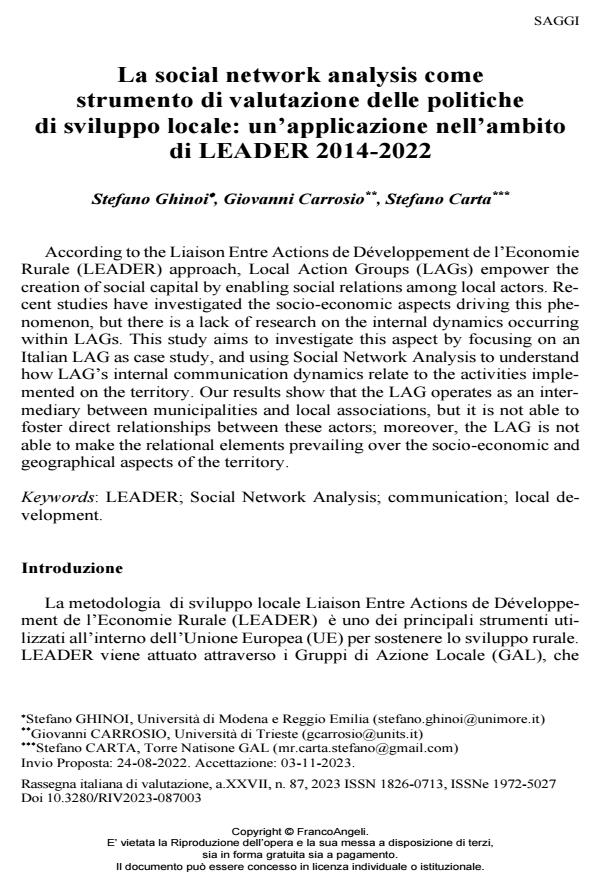La social network analysis come strumento di valutazione delle politiche di sviluppo locale: un’applicazione nell’ambito di LEADER 2014-2022
Journal title RIV Rassegna Italiana di Valutazione
Author/s Stefano Ghinoi, Giovanni Carrosio, Stefano Carta
Publishing Year 2024 Issue 2023/87
Language Italian Pages 19 P. 32-50 File size 535 KB
DOI 10.3280/RIV2023-087003
DOI is like a bar code for intellectual property: to have more infomation
click here
Below, you can see the article first page
If you want to buy this article in PDF format, you can do it, following the instructions to buy download credits

FrancoAngeli is member of Publishers International Linking Association, Inc (PILA), a not-for-profit association which run the CrossRef service enabling links to and from online scholarly content.
According to the Liaison Entre Actions de Développement de l’Economie Rurale (LEADER) approach, Local Action Groups (LAGs) empower the creation of social capital by enabling social relations among local actors. Re- cent studies have investigated the socio-economic aspects driving this phe- nomenon, but there is a lack of research on the internal dynamics occurring within LAGs. This study aims to investigate this aspect by focusing on an Italian LAG as case study, and using Social Network Analysis to understand how LAG’s internal communication dynamics relate to the activities imple- mented on the territory. Our results show that the LAG operates as an inter- mediary between municipalities and local associations, but it is not able to foster direct relationships between these actors; moreover, the LAG is not able to make the relational elements prevailing over the socio-economic and geographical aspects of the territory.
Keywords: LEADER; Social Network Analysis; communication; local de- velopment.
Stefano Ghinoi, Giovanni Carrosio, Stefano Carta, La social network analysis come strumento di valutazione delle politiche di sviluppo locale: un’applicazione nell’ambito di LEADER 2014-2022 in "RIV Rassegna Italiana di Valutazione" 87/2023, pp 32-50, DOI: 10.3280/RIV2023-087003